MAY I BORROW YOUR LANDSCAPE?
No Work Garden Expansion
If you’re feeling that your garden or yard is too small, you can expand your horizons without buying another square inch of property, without even much work. Just borrow some landscape.
“Borrowed landscape” originally appeared in the 17th century Chinese garden treatise Yuanye; the technique was borrowed by the Japanese and shakkei, as borrowed landscape is known, has been frquently used in their gardens. But it can be employed in any garden style.
The idea is to incorporate some elements of the surrounding landscape into your landscape to create the feeling of greater space within your garden. You could reap a feeling of infinite space if that distant element is a mountain or ocean that stretches all the way out to the horizon.  Or you could just borrow a bit of closer scenery from your neighbor’s yard — an attractive clump of birch or larch trees, or a pergola dripping with wisteria blooms, for example.
Or you could just borrow a bit of closer scenery from your neighbor’s yard — an attractive clump of birch or larch trees, or a pergola dripping with wisteria blooms, for example.
What to Borrow
First look around to see what you’d like to borrow. Ideally, this would have been considered before you planned or planted anything, even before you moved any dirt or stones around in your own garden. Still, it’s usually not difficult to borrow landscape even into an existing garden.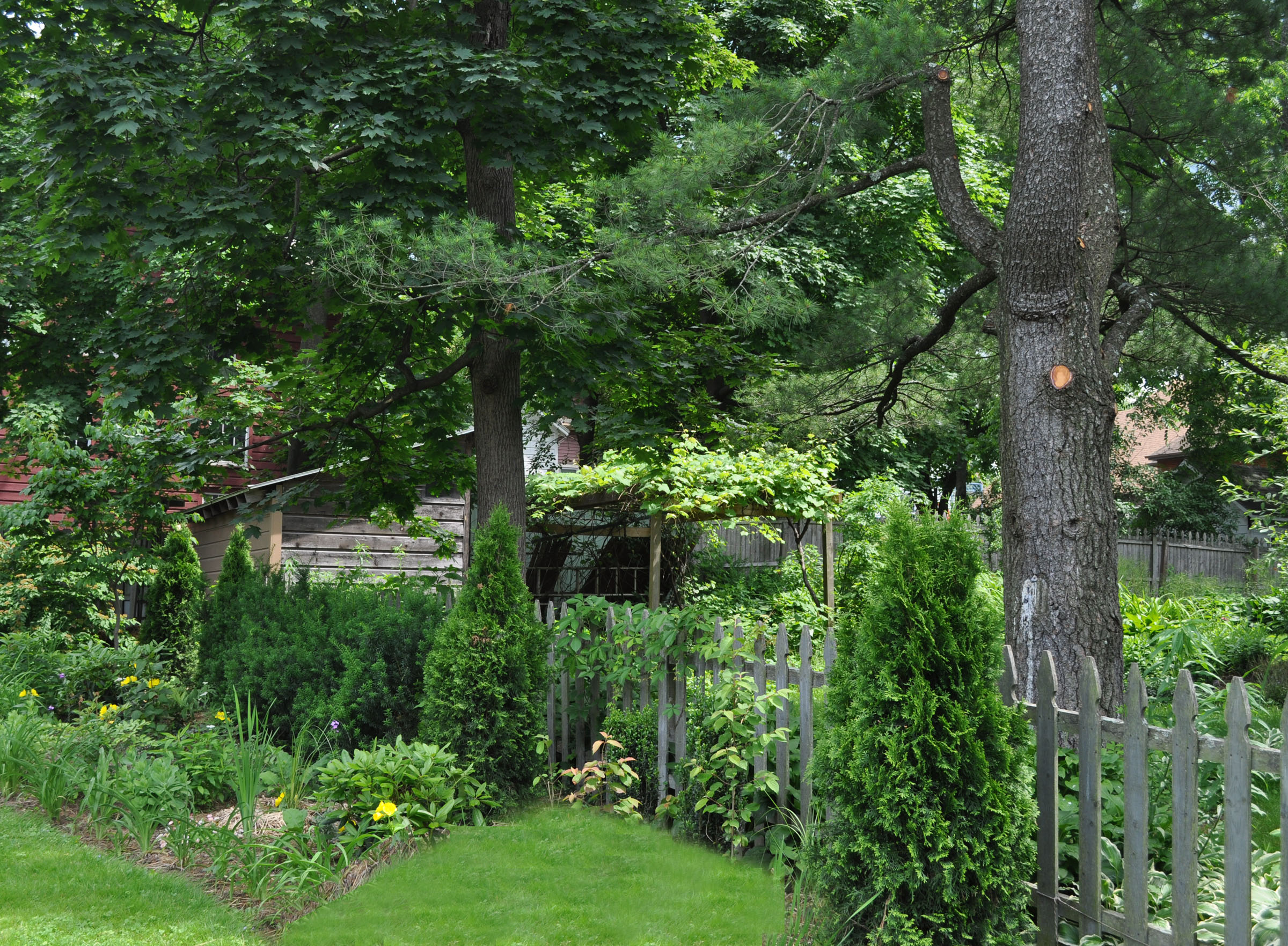
No need to borrow a whole scene, either. A view of a lumbering meadow that breaks into a range of mountains might create too expansive a feeling if on view from everywhere in your own garden. Part of the art in gardening is balancing that need for coziness and enclosure, which gives us the word “garden” (from the same root as the words “guard”, “yard”, and “girth”), with a feeling for the infinite, for limitless horizons. A window of some expansive scene — through an opening in a fence or hedge, for example — might make such a view all the more precious.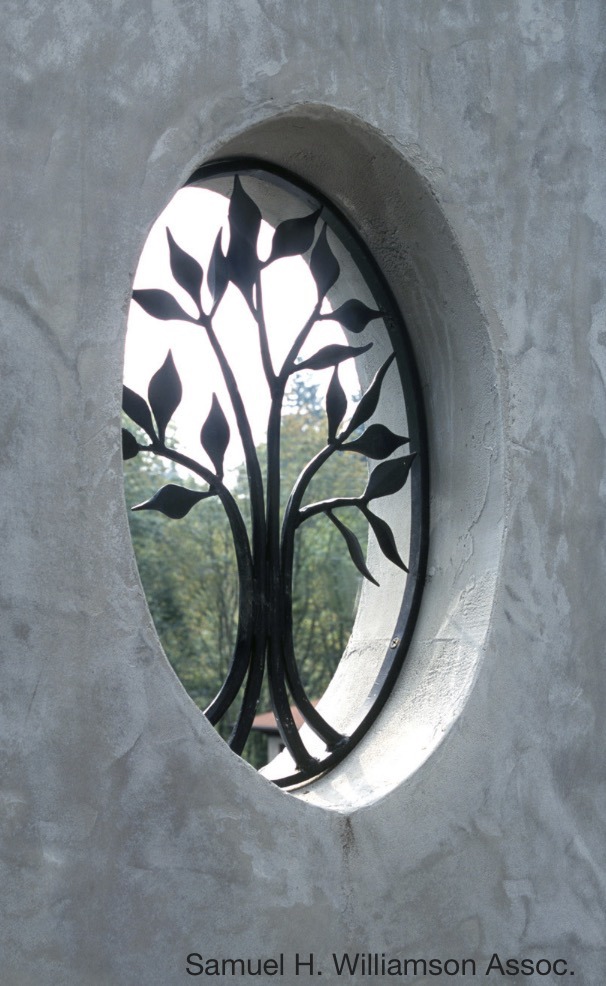
I’m in the process of redesigning some of my landscape, which will have a small meadow to its southern boundary. 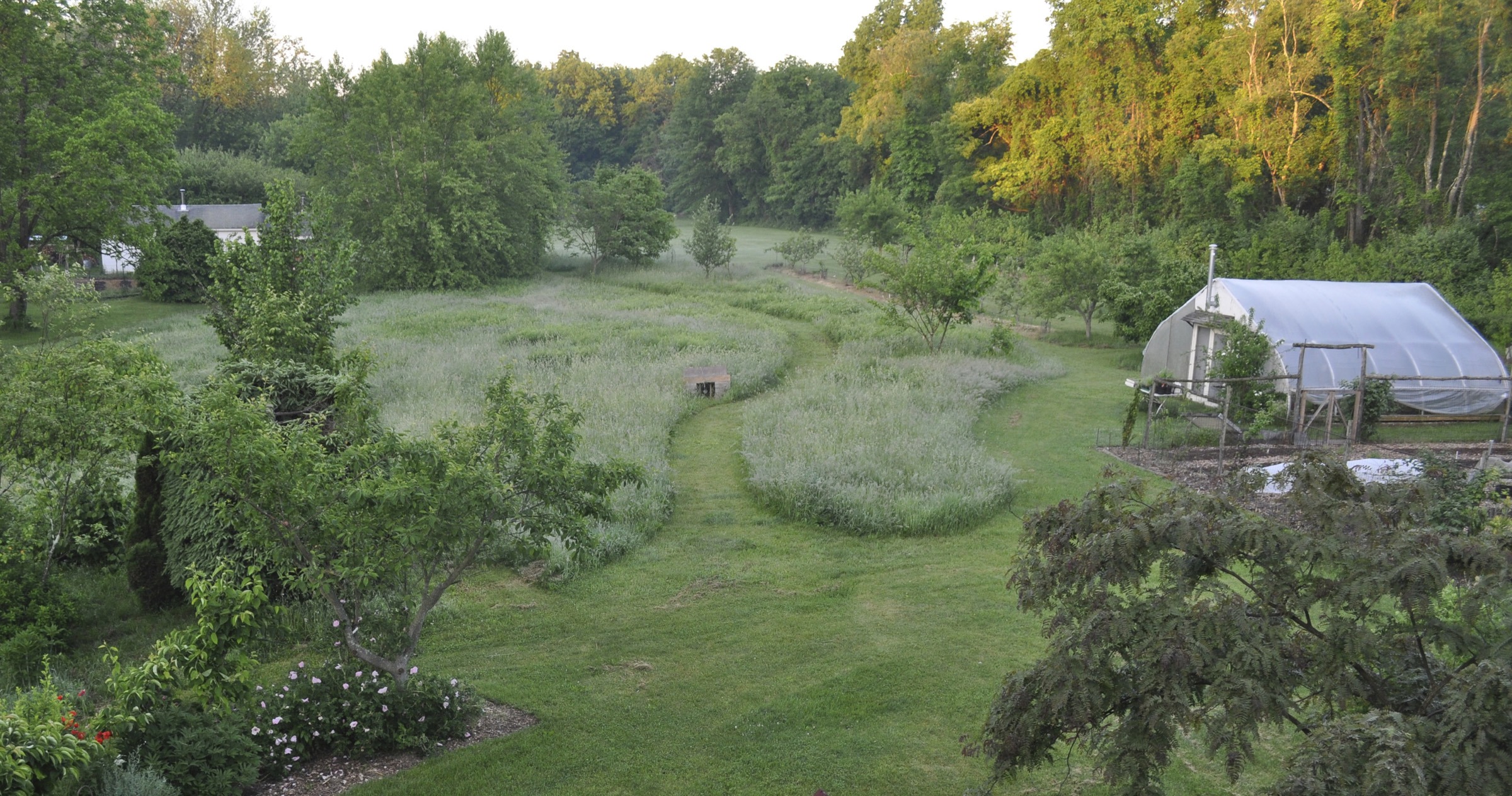
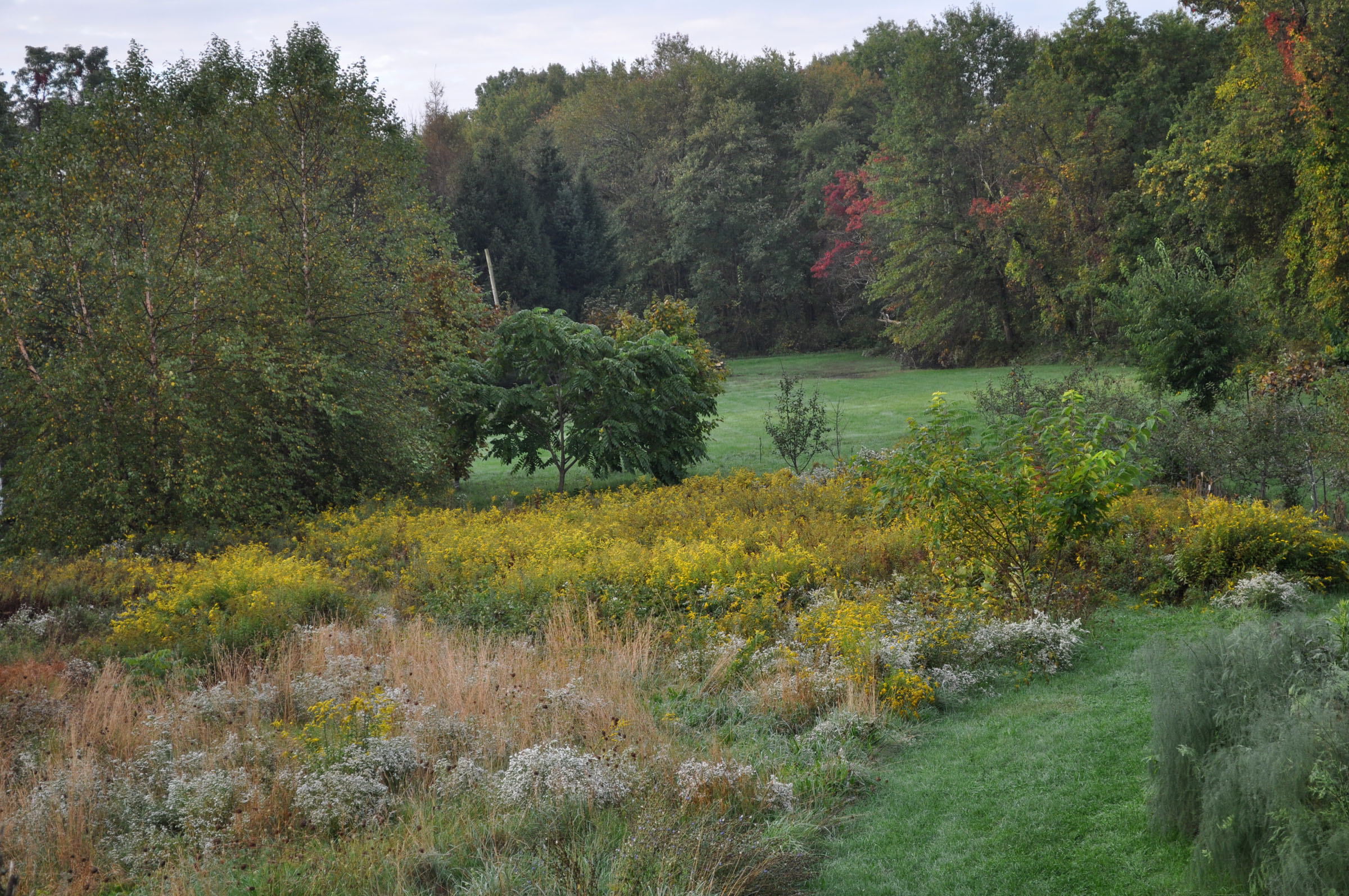 Lucky for me, my neighbor beyond that boundary also has a meadow, bordered after a couple of hundred feet by woods. Vines and shrubs growing up and creeping along the deer fence (2 x 4 wire) I erected years ago so the boundary between our properties is defined very clearly. Too clearly. My plan, at the very least, is to slide that fencing up its posts about a foot so that I can cut shrubs and vines there. Once they’re removed, the two meadows can visually meld together.
Lucky for me, my neighbor beyond that boundary also has a meadow, bordered after a couple of hundred feet by woods. Vines and shrubs growing up and creeping along the deer fence (2 x 4 wire) I erected years ago so the boundary between our properties is defined very clearly. Too clearly. My plan, at the very least, is to slide that fencing up its posts about a foot so that I can cut shrubs and vines there. Once they’re removed, the two meadows can visually meld together.
Alternatively, I might put up a new fence, one that is very evident. A split rail fence, for instance. 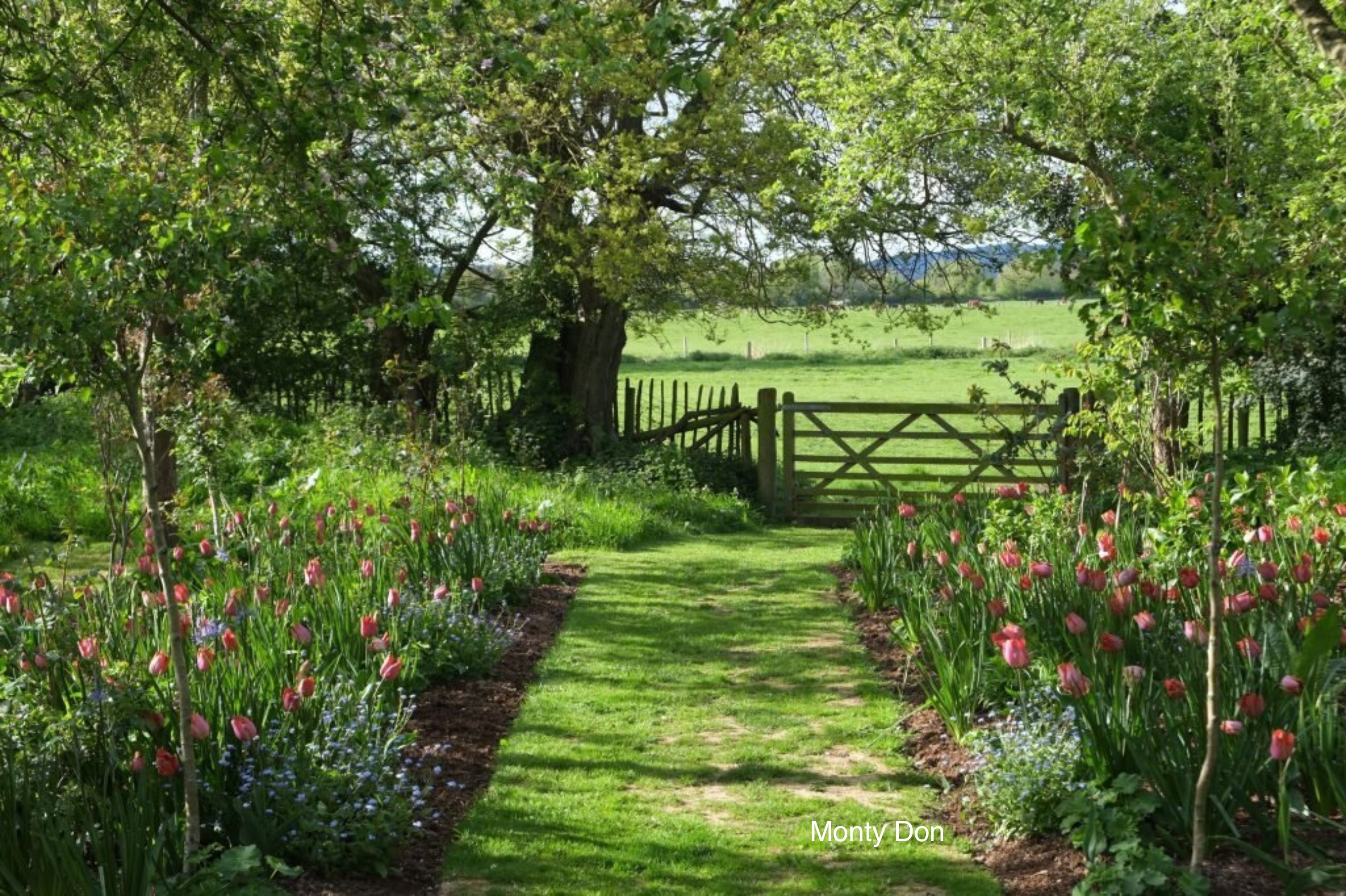 In this case, I would leave a wide opening in the fence, perhaps with a gate, to give the feel of the fence separating “my” two meadows. Sheep in the distance meadow would be a nice touch. My neighbor once had horses graze there; they were very decorative. (Unfortunately, another neighbor’s horse once got loose and galloped into my meadow and then through my garden fence on either side of the garden; the garden fence, despite my efforts, has never been the same.)
In this case, I would leave a wide opening in the fence, perhaps with a gate, to give the feel of the fence separating “my” two meadows. Sheep in the distance meadow would be a nice touch. My neighbor once had horses graze there; they were very decorative. (Unfortunately, another neighbor’s horse once got loose and galloped into my meadow and then through my garden fence on either side of the garden; the garden fence, despite my efforts, has never been the same.) 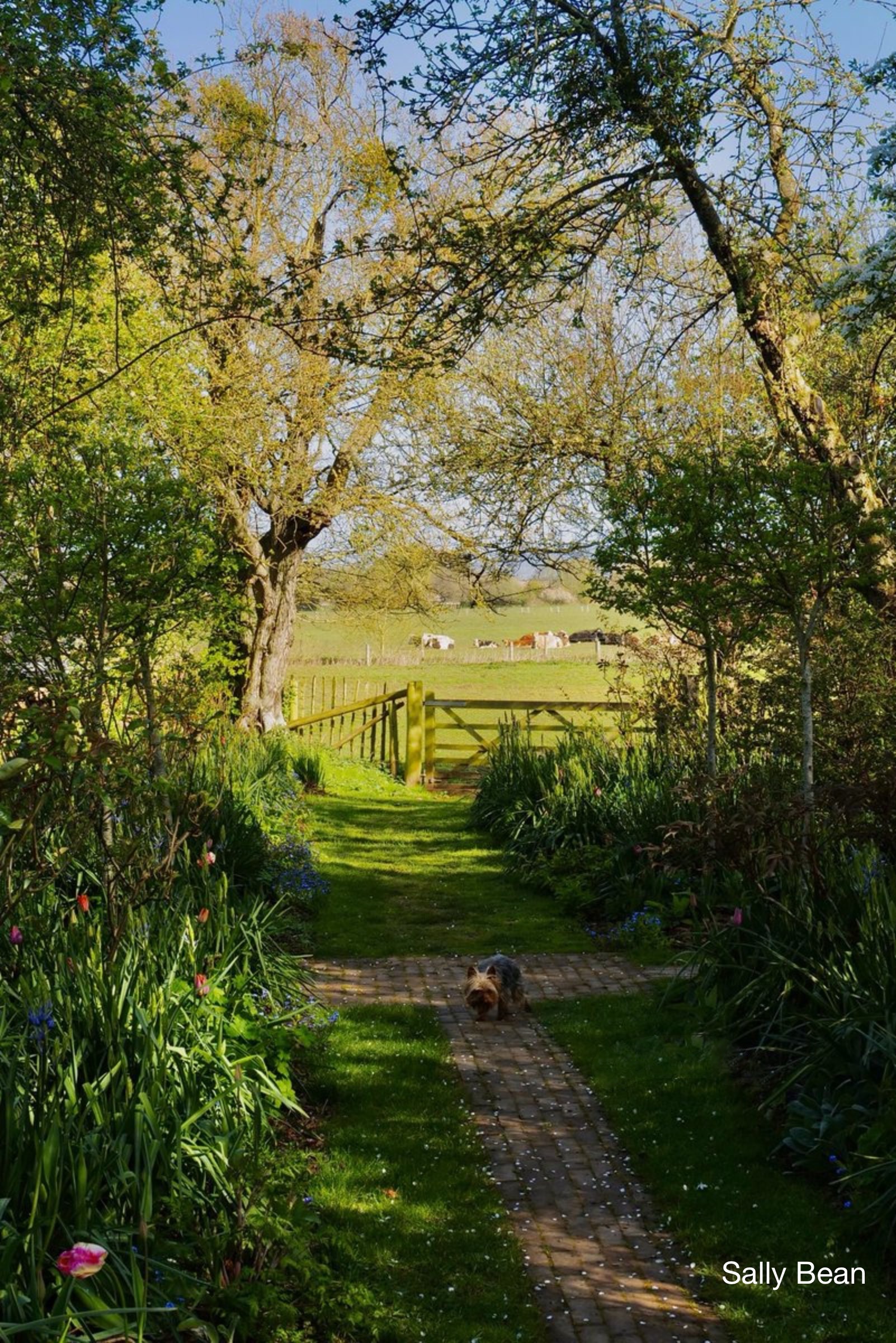
Once you’ve honed down what surrounding scenery you might like to borrow, bring it on home to your garden. This might entail nothing more than planting or building something to obstruct part of a view, thus lending focus to what remains. Or the site might need removal of some obstruction, such as a pine tree in the wrong place or a fence that was designed with too much height.
No Need to Borrow the Whole Thing
Most borrowed scenery represents just a slice of what is out there, so bringing that scenery home might just as likely entail selective trimming of that pine tree or else making an opening in a wall or solid fence.
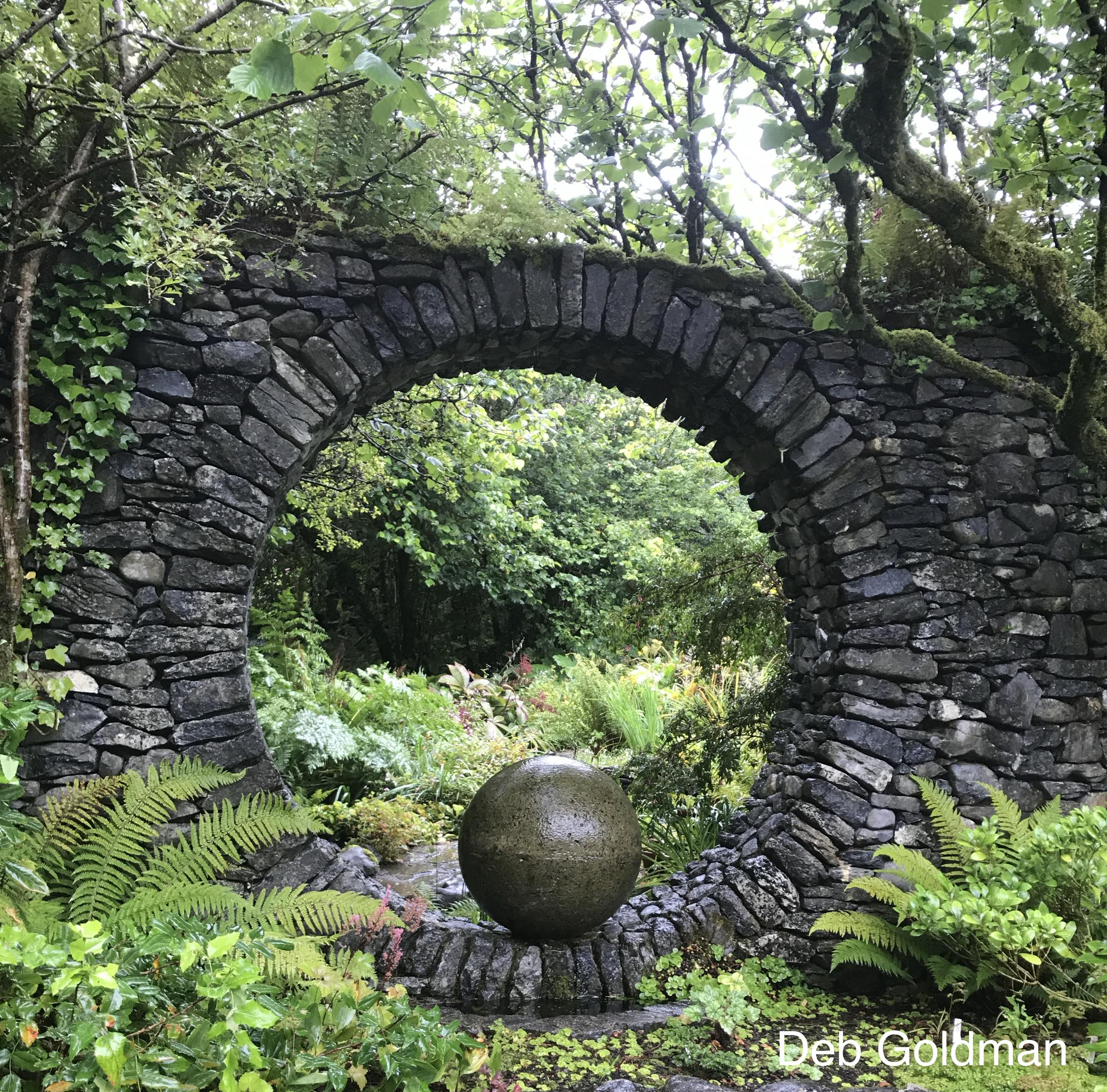
Moon gate, at property line
As for your neighbor’s pergola clothed in wisteria? You might not want to also see the red sports car always parked nearby. A solid fence with a well-placed tall and narrow, circular, or elliptical opening can let you edit your view.
The opening in the fence in itself contributes to the look of the garden. Popular in both Eastern and Western gardens are fences or walls with moon windows, which are circular openings that let through a chosen view.
A relatively narrow rectangular opening in a fence or wall might also be effective in bringing attention to a distant view. Although screening out much of what lies beyond, a small opening just begs viewing of the landscape beyond.
Another way to borrow landscape is to echo elements in the distant landscape with similar elements within your garden. In your garden, a grouping of rocks might show kinship with a similarly shaped distant mountain. A small but upright tree might form a connection to stately, spired conifers in the distance. A trickle of water — even rounded stones representing a dry streambed — might form a visual association with a majestic waterway far away.
In most cases, borrowing a landscape entails less muscle than creating a landscape, less so the smaller your garden is because then all the nearby elements loom larger in proportion to distant ones.


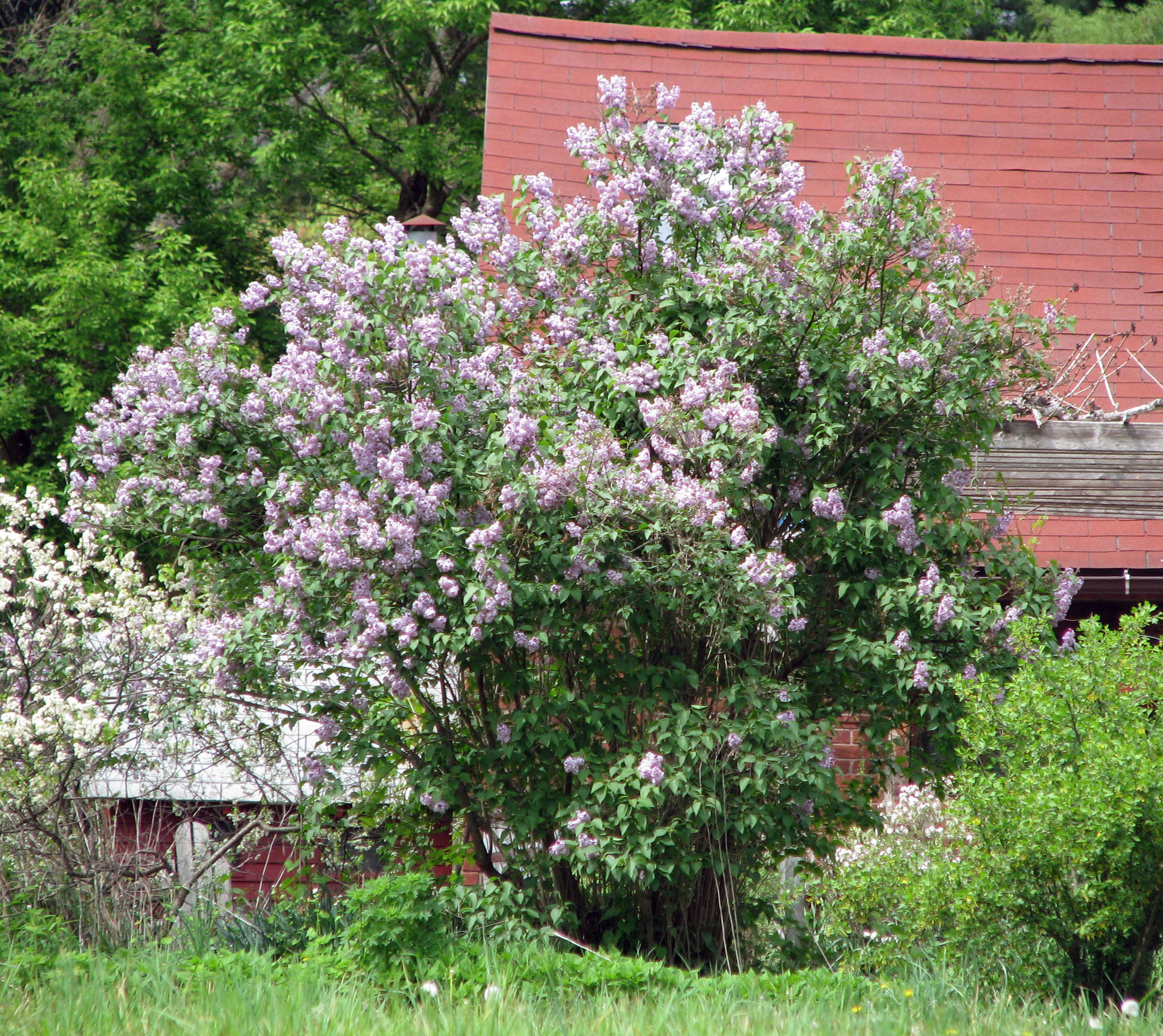
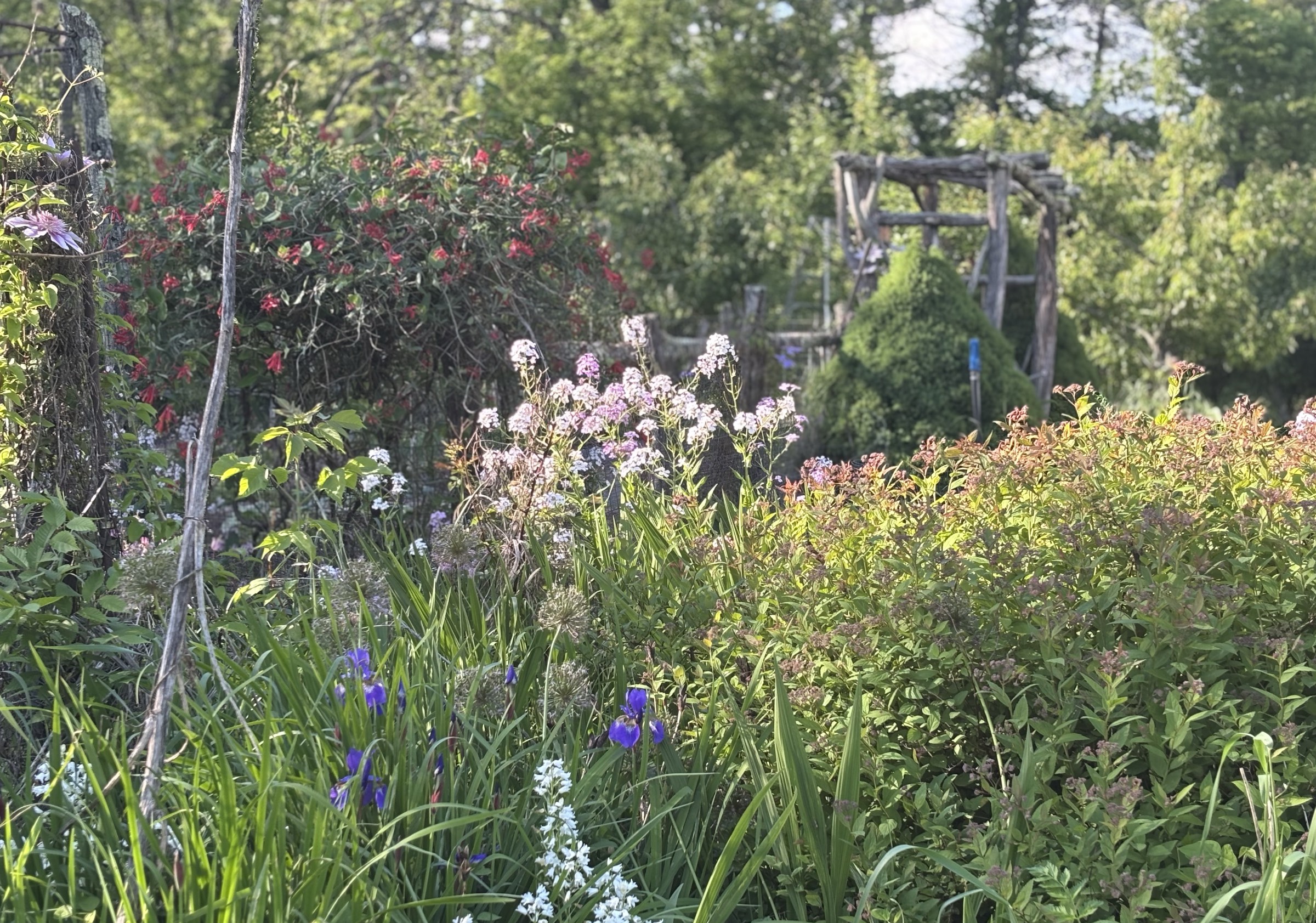
Leave a Reply
Want to join the discussion?Feel free to contribute!